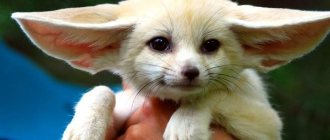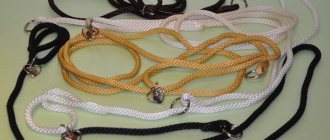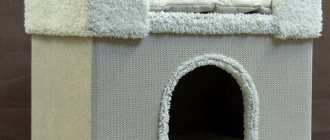Fennec fox - who is it?
The fennec fox is probably the most amazing representative of the genus of foxes in the canine family.
The name "Fennec" translates as "fox" (Arabic word fanak). However, the scientific name of this animal is Vulpes zerda, which literally means “dry fox.” This gives a clue as to the fennec's habitat. These animals live in the deserts of the Arabian Peninsula and North Africa.
Scientists are still arguing about whether the fennec cat can be called a fox. After all, the behavior and structure of the fennec fox differs from other types of foxes. Even the number of chromosomes is different: the fennec fox has 32 pairs of chromosomes, while other fox species have 35 to 39. The fennec fox does not have the musk glands characteristic of a fox. And unlike foxes, which live alone, the fennec fox is a social animal. Therefore, a number of scientists have identified the fennec tree as a separate genus “Fennecus”.
In the photo: fennec
Lifestyle
Photo: Hanny Liviana
Night hunters need places to rest that will provide them with adequate shelter from the scorching desert sun. During the day, fennecs hide in cool underground burrows , which they dig themselves. Dens are found under sand, in open desert areas or in areas overgrown with dry grass. Plant roots usually serve as support for the walls of the burrow. The leaves are used to line the fox's nesting chamber.
Family groups build dens in close proximity to each other or combine them into extensive tunnel systems. The total area of the series of tunnels dug in dense soil reaches 120 square meters and has a maximum of 15 entrances. In the case of a soft, loose substrate (sand), the burrow has a simpler design and only one entrance leads to it, providing safe escape in the event of an external threat.
What does fennec look like?
The fennec fox is a small animal, a fox, smaller in size than a domestic cat. The height at the withers of the fennec is from 18 to 22 cm, the body length is from 30 to 40 cm, the tail reaches a length of 30 cm. The fennec weighs no more than 1.5 kg.
The fennec muzzle is pointed and short. The eyes of this fox are quite large.
The fennec cat's ears are its distinctive feature. The fennec fox has the largest ears relative to the size of its head among predators - the fennec's ears can reach a length of 15 cm. Such ears are not a luxury; the animal is forced to catch the slightest rustle in order not to miss its prey - small animals and insects. In addition, the fennec's large ears are excellent for thermoregulation and remove excess heat from the little fox's body, which is necessary in a desert climate.
The fennec's feet are covered with fur, and thanks to this, the animal runs across the hot desert sands silently and easily.
Fennec cats have small teeth.
The fennec cat's fur is soft and thick.
The fennec's color allows it to blend in with the sand: the fennec's fur is fawn or reddish on top, and white below. The young fennec fox is almost white. The tip of the fluffy tail is black.
Like other wild foxes, the fennec fox does not have sweat glands.
The fennec fox can endure thirst for a long time if it is possible to obtain liquid from food. Fennec's kidneys work in such a way that they do not allow dehydration for a long time.
In nature, the fenech chooses sparse bushes or thickets of grass, where it finds both food and shelter. The fennec lives in a hole, which is equipped with many secret passages.
In the photo: fennec
Fenechs form family groups (up to 10 animals). However, they go out hunting one at a time.
The fennec fox jumps well: up to 120 cm forward and up to 70 cm up.
Habitats
Fenech is adapted to life in desert and semi-desert areas. Main place of residence: North Africa, Arabian Peninsula. The largest population is found in the central Sahara; other predators are practically absent here due to lack of water.
Note!
- Spitz. Features of the breed.
Car hammock for dogs. What it is?
- Removal and cremation of animals
Typically, the place where the fenech lives is located in close proximity to low-growing bushes and grass thickets. This makes it possible:
- quickly hide from enemies;
- find food - both plant and insects;
- dig a hole that will be invisible to prying eyes, and the roots of the plants will securely hold its walls.
Look - Squirrel - species, detailed description, what it eats and where it lives. Lifestyle and population of squirrels (110 photos + video)
If there is no vegetation, the animal can choose various crevices, caves, etc. for its habitat.
The mini-chanterelle's hole is a complex branching system of underground passages with several exits. During the night, 1 animal can dig up to 6 meters of branches! Sometimes in such a spacious hole, in addition to the main family, the number of which reaches 10 individuals, other families of foxes can live.
This is interesting: the fennec is the national animal of the largest and most developed country in Africa - Algeria. His image is printed on some government coins. Algeria's football team is called Les Fennecs.
Can we say that the house fennec is an interesting pet?
If you create good conditions for the fenech, he can become a rather interesting pet, smart and affectionate. However, keeping a fennec cat at home is quite difficult, since it is still a wild animal and not a pet.
Success in taming a fennec cat depends on the age at which it came to you. It is best to purchase a fennec cat at the age of 6 - 9 months (before puberty).
At first, give your pet maximum attention, communicate with him and feed him by hand. However, avoid sudden movements and loud sounds - the fennec fox is very sensitive and timid.
In the photo: house fennec
Features of reproduction
Fenechs bring offspring once a year. A second litter can be born only due to the death of the first puppies and only with a sufficient amount of food.
Puberty occurs between 6 and 9 months of age. The mating season falls in January-February. In this case, the male rut lasts about 2 months, and the female’s sexual activity lasts only 2 days.
Males behave aggressively during the rut, intensively marking their territory with urine and excrement. The animals are monogamous, married couples are married for a long time.
Pregnancy lasts up to 53 days. Before giving birth, the den is prepared for the birth of babies - it is covered with bird fluff, dry plants, and wool. Puppies (2-6 individuals) are born completely blind, helpless, weighing no more than 50 grams. The eyes open after two weeks, at the same time the ears straighten and begin to grow vigorously.
The male provides food for the offspring and the female, but is not allowed near the young until 5-6 weeks of age. After this period of time, the puppies begin to crawl out of the hole, play around it, and explore the world around them. At 3 months, milk feeding of fox cubs stops; they move away from the den to much greater distances.
At nine months of age, some of the matured individuals leave the burrow, forming new pairs. Some remain to live with their parents, participating in the educational process of new generations of desert foxes.
In difficult natural conditions, the fenech lives for about 7-10 years. In more comfortable conditions of nurseries, zoos or apartments, life expectancy increases to 12, and sometimes even up to 20 years.
How does Fenech behave at home?
A tame fennec at home behaves friendly, playful and inquisitive. The fennec fox loves to sleep next to its owner or sit in his arms.
At home, the fennec fox is a very active animal; it searches for something almost all the time, runs around, and can easily jump onto a bedside table, sofa or computer desk. So it’s better not to leave a cup of tea or coffee near your laptop!
Fenech is very talkative: he whines, snorts, barks, grumbles and howls. Moreover, it voices not only during the day, but also at night - you need to know about this before getting such a pet.
The fennec fox won't refuse to play pranks either. For example, if he finds a bag of sugar or cereal, he will be delighted and instantly take the contents to every corner.
Please also note that all electrical wires will have to be hidden - the fenech likes to chew on them.
In the photo: fennec at home
How does the fennec fox get along with other animals and with children?
Some owners say that a fennec cat and a cat can easily become friends and even play together. However, small animals can provoke aggression in the fennec fox. In addition, when living together with other animals, you need to take into account the timidity of the fennec fox. You should not stress your existing animals and your new pet if you are not sure that they will get along.
And no matter how much effort you make to tame a fennec cat, it is still not a dog. So you shouldn’t bring a fennec into a family with small children.
Natural enemies
Thanks to the ability of dwarf foxes to almost instantly bury themselves in the sand or hide in their branched underground passages at the slightest suspicion of danger, they have very few enemies. The main contenders for this role are eagle owls and caracals (desert lynx).
Humans have done the most harm to these cute little animals. Poachers destroy them for their luxurious fur or capture them for sale to zoos, nurseries or private individuals as pets.
For this reason, the fennec tree is listed in Appendix II of the international agreement, the Convention of Cites, governing trade in endangered animal and plant species.
Is it possible to walk with a fennec cat?
If you train your fennec cat to take walks, he will be happy to keep you company. However, do not forget that the fennec fox is a heat-loving and gentle animal, for which hypothermia can be deadly. Therefore, in cold autumn, winter and the first half of spring, it is better to refrain from walking with a fennec.
It is better to lead a fennec cat not in a collar, but on a harness. A fennec fox can wriggle out of a collar and run away, and in addition, any accidental, even weak, tug on the leash in this case can cause injury to the cervical spine or larynx.
When walking with a fennec cat, you will have to be vigilant - oncoming dogs may show aggression.
It is better to walk with the fennec early in the morning and late in the evening - this way you will be in unison with the natural biorhythm of the fox.
In the photo: fennec fox
Keeping fennec at home
There is an opinion that the fennec fox is the only representative of the fox genus that can be kept at home. But a breed of domestic foxes has already been bred, which also live in families.
Nevertheless, it is the keeping of fennec at home, although it has not yet become commonplace, that is gaining more and more popularity. However, is it easy to keep a fennec fox at home?
The domestic fennec fox is not as easy an animal to keep as some people think.
First of all, fennec is a nocturnal animal. This means that he is awake while we are sleeping, running around and making noise, causing a lot of anxiety.
Secondly, the fennec is neither a dog nor a cat; it is not easy to train him and it is not always easy to accustom him to a diaper or litter box. At the same time, the fennec fox does not smell like violets.
Thirdly, the fennec will not live in a cramped cage. He needs an enclosure or a separate room (and it must be heated).
The floor in the room where the fennec fox lives should be covered with sand or blankets should be provided for the pet’s use so that the animal can dig holes and bury itself.
You will have to maintain a temperature of +20 degrees or higher. If it gets colder, the fennec will quickly catch a cold. And a fennec cold often ends in death.
In addition, it must be taken into account that only a few veterinarians are willing to advise on the health of exotic animals such as the fennec fox. And it is very likely that if your pet gets sick, you will have no one to turn to for help.
Therefore, before deciding to keep a fennec fox at home, you should once again weigh the pros and cons.
In the photo: fennec fox
Price
Not every family can afford these animals. The cost of one animal ranges from 10,000 to 50,000 thousand rubles . Moreover, females are valued much higher due to their ability to give birth to young.
It won't take much money for Fox's living expenses. The animal quickly tames to the tray, finds a common language with people and animals and practically does not neglect any food. However, remember that the fennec is a nocturnal animal. To avoid having to spend money on buying new furniture or interior items, give the animal an enclosure or room so that it can show its hunting instincts there.
What to feed your fennec cat?
Many potential owners are wondering “what to feed a fennec cat at home.” To find the answer, you need to consider that in natural conditions the fennec fox is almost omnivorous. Fenech feeds on insects, small vertebrates, bird eggs, fruits and roots of plants, and does not disdain carrion.
So at home, the diet of a fennec fox is similar to that of a small dog.
Fenech can be fed:
- Meat (lamb, rabbit, veal, chicken).
- Fish (boneless, boiled).
- Vegetables (boiled).
- Fruits (raw).
Before the purchase
When preparing for sale, fox cubs are usually sterilized, but they reproduce well in captivity. Before buying an exotic tiny pet, you need to take into account that it does not smell very nice and makes constant squealing sounds. A sensitive fox may unexpectedly take revenge for an insult, and therefore it is advisable to protect it from small children. But all the comments cannot compare with the pleasure that a playful little charming animal brings. Fenech, like every creature, is responsive to tenderness and love, but only patience and attention will make the fox a full-fledged member of the family.
If you decide to get this cute fox, you can join groups of fennec owners on social networks. There you can read about the peculiarities of fennec care of other owners and chat about your favorites.
How much does a fennec fox cost?
The fennec fox is a rare animal, so its cost is quite high. In Russia, a homemade fennec tree costs 65–200 thousand rubles.
And even despite the high cost, it is not easy to buy a fennec both in Belarus and in Russia, so these animals are often brought from America or Western Europe. But if you choose this option, be careful and use the services of a specialist: you need to know the rules for the export and import of such animals, prepare the necessary package of documents and make sure that the fennec fox is healthy.
However, purchasing a fennec fox is only a small part of the cost of owning a fennec fox. It is necessary to create conditions for the pet that are close to natural. Otherwise, your furniture and other property will suffer, and living together with a fennec cat will turn into a living hell for both you and the animal.
In the photo: fennec fox
Nutrition
The animal is a predator, but it feeds not only on animal food, but on everything it sees. The harsh nature of the desert obliges us to do this. The fennec fox the bulk of its food from the sand and earth with its strong paws. He prefers to go hunting at night and alone, however, many foxes do this.
The process involves tracking prey by scent and then capturing it. His own silent step allows him to hear the most distant and quiet echoes while walking. Sensitive ear “locators”, having caught the quietest sounds, instantly turn in that direction.
And he begins to slowly approach the source of the sound. His eyes “pierce” the blackness of the desert night. He can already see from a distance whether it is a bird or a large locust. In the desert you have to make do with what you find. By the way, the fennec is an amazing bloodhound.
It is precisely because of the rarity of the population of those regions that he does not often have to feast on the hot blood of a lark or hazel grouse. Therefore, as soon as he smells a slight hint that a bird was running here, he immediately sets off on the trail. And it is impossible to stop him.
Sometimes the trail leads to the place the bird left. Well, no one is immune from failure. Fenech turns around and with the same tenacity goes to the second end of the tangled trail. It instantly kills sleeping animals. And if a jerboa or a vole allowed itself to be discovered and tried to hide, it sets off in pursuit.
And very often the race ends in success. The fact is that he skillfully calculates the place where the jerboa will land after a high jump. This is the geometry. And he literally digs voles out of the ground. Enjoys feasting on bird eggs, small birds and rodents. The menu necessarily includes insects and some plant foods. Does not disdain carrion.
As already mentioned, the animal cannot sweat, so it does not lose almost an ounce of priceless liquid. As a result, it can go without water for a long time, obtaining the necessary moisture from food (meat, leaves and berries). But, seeing the water, he, along with other animals, drinks until it stops.
One of the qualities of the fennec is its thriftiness. If he could not finish his food, he will definitely hide it in a secluded place. At the same time, he will never forget where it is. The fox has enemies - caracals, hyenas, jackals, and even leopards. However, he quickly hides from them in the sand, having heard the danger in advance. But he often doesn’t have time to escape from the eagle owl. After all, he flies up almost silently.
Fenech: interesting facts
- The most famous fennec fox is the same fox from “The Little Prince” by Antoine de Saint-Exupéry. It is he who owns the phrases “You are responsible for those you have tamed” and “Only the heart is vigilant - you cannot see the most important thing with your eyes.”
- In Algeria, the fennec fox is revered, where the fennec fox is the national animal. Even the football team of this country is called “Fennecs”. In addition, the image of a fennec fox adorns the Algerian ¼ dinar coin.
- The fennec fox also symbolizes the ecology of Tunisia, and in every city you will find an image of a fennec fox dressed in blue and white.
- Fennec is the codename and logo of Firefox for mobile.
- The popularity of the fennec cat as a pet jumped sharply after the appearance of the cartoon Zootopia.
- Mentions of the fennec are found in the following works:
- Mine Reid "Young Hunters" (although there is no fennec fox in Kalhari).
- Henri Troyat "The Crash" and "City of Lions".
- Antoine de Saint-Exupéry "Planet of Men".
- Felix Krivin "Fennec Fox".
- Sergey Lukyanenko “Transparent stained glass windows”.
- Frank Herbert "Dune".
In the photo: fennec











